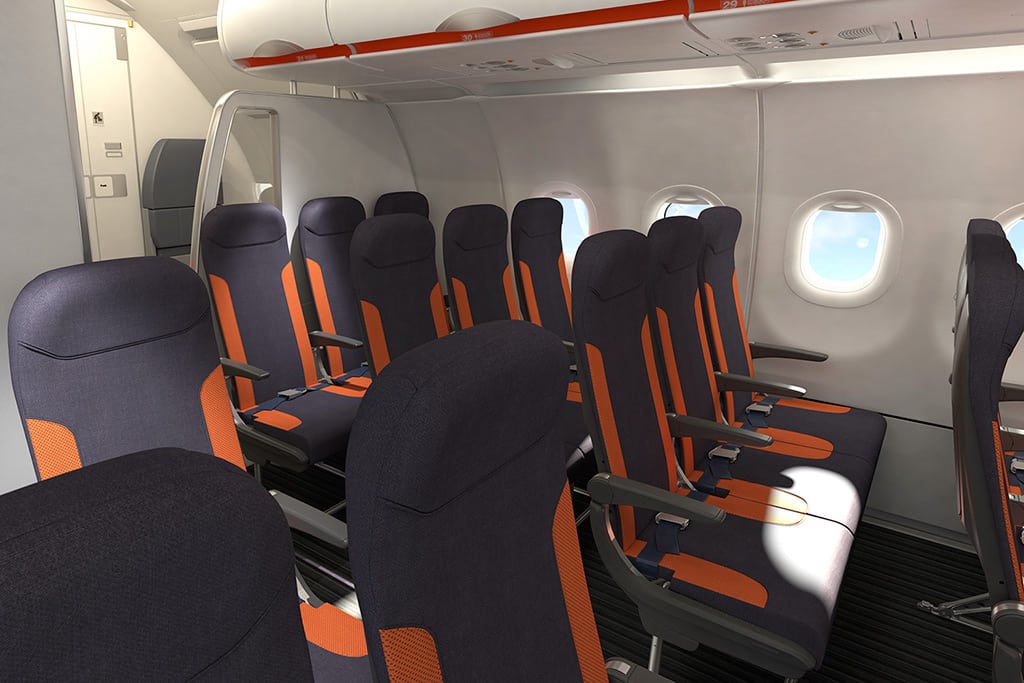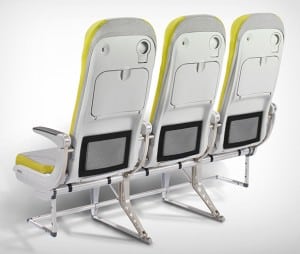Skift Take
The really good news is that, while Premium passengers drive profits, Economy passengers are growing. That passenger growth can lead to positive changes in future Economy cabin design.
To recline, or not to recline, is a troublesome question. Recent events in the U.S. air travel market prove that it is a volatile issue for some passengers, leading to aggression onboard.
For airlines, and the aircraft seating industry, it’s a puzzle. Is it better to provide the option of recline, and risk seat troubles when one passenger offends another, or should the recline feature become a relic of passenger experience past?
At a recent cabin comfort panel session during the IATA World Passenger Summit, industry experts reviewed the merits and trends of recline and no-recline seats, searching for balance.
Present at the panel was Klaus Steinmeyer, VP Business Development for Recaro Aircraft Seating, who reported that, after years of no-recline models waiting on the concept board, interest in this option has spiked.
“We brought non-reclining seats in 2009, for the Crystal Cabin award. [It was considered] a great seat,” he said. “But then it got silent. We didn’t get a lot requests for the seat. Now-a-days, suddenly, we have a lot of requests for the no-recline seats.”
There are inherent benefits to airlines in this seat model, beyond avoiding altercations. The seats, more commonly labelled as “pre-reclined,” are sloped to conform to the body ergonomically which compensates for some passenger comfort issues resulting from a fixed back. Without a reclining mechanism, they may suffer less damage from repeat use, and have fewer maintenance issues. Generally, the weight of these seat models is also reduced since the feature is incorporated in today’s reengineered lighter seats.
But these benefits didn’t tempt airlines before. So what has changed? Steinmeyer believes this new demand is related to other watershed changes in cabin standards.
“I compare this to the business class seat in single-aisle aircraft,” he says. “It was common to have a business class comfy chair in 2-2 configuration, but this barrier has been broken. It’s been accepted to have economy seats, in certain regions, just by leaving open the center seat, or giving a little more leg space. So it’s been accepted in the market. It’s the same with no-recline seats, on shorter routes. Once this is accepted, it rolls on. Then the market says, ‘why can’t we do this?'”
Presenting an airline point of view, Johan Mägi, Head of Onboard Product and Services at SAS said, “I think it really depends. You need to know your business and your market and [design for] that travel group. That’s their travel group, it may make money for them, but it may not make money for you,” he explained. “Economy class is a corporate class, really, for us. A lot of [them are] return customers. Ten percent of the population in Scandinavia are frequent travelers. [By providing comfort] we can get them back, and back and back. For us, comfort is very important. For other carriers, it depends.”
Different Choices
Airbus’ Vice President Cabin Marketing, Ingo Wuggetzer, also participating in the panel, explained that other global markets, where passenger numbers are rising steadily and expected to continue rising, and/or where low-cost models are dominant, may choose differently.
“There are lots of sectors out there, depending on your market,” Wuggetzer said. “For some low-cost carriers that might be a very good solution, and on premium carriers maybe not. So there is a wide spectrum of solutions that work in different regions, for different business models. What we try to do is offer the choice and be as flexible as possible, on a low cost level. Because being flexible is key.”
For now, heavy demand for no-recline seats is limited to low-cost airlines and/or short to medium-range flights. Steinmeyer said this dynamic of reducing cabin features to keep with lower standards by competition could spread to adjust to features passengers value.
“It’s the same with video or IFE or audio systems on short-range seats. People are still taking it, just to have it on there, but [passengers] are not using it. For me, it’s just a certain time of experience in the market, and then it rolls out.”
But it’s not all bad news for travelers, especially in the long-haul market. Ayşegül Durak, chief engineer for cabin interiors at Turkish Airlines, recently urged the industry to make better economy seats for long-haul flights during the Innovative Seating conference in Hamburg, as Aircraft Interiors International Magazine has reported.
“Whatever we serve: the best IFE, the most delicious food; people need to sleep and they need to change their position. It is our job as professionals to provide economy passengers with the most humane comfort,” she said.
As industry designers review what a more comfortable economy seat looks like, though, it may or may not include a recline feature. Newer seat designs, already in the marketplace, allow passengers to recline by sliding forward instead of leaning back, which could, if nothing else, reduce friction among passengers.
The Daily Newsletter
Our daily coverage of the global travel industry. Written by editors and analysts from across Skift’s brands.
Have a confidential tip for Skift? Get in touch
Tags: aircraft interiors, inflight, passenger experience
Photo credit: Pre-reclined seats on an EasyJet plane. EasyJet

